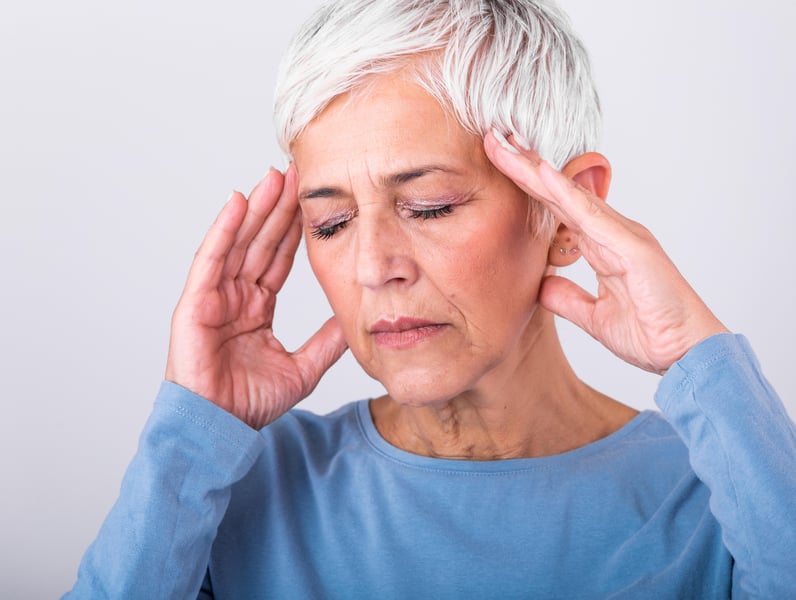Get Healthy!

- Posted February 14, 2022
Feel Dizzy When You Stand Up? Two Simple Steps Might Ease That
Almost everyone has had a dizzy spell after standing up too quickly, but some people suffer them regularly. Now, a new study suggests two do-it-yourself ways to help.
The study focused on what's called initial orthostatic hypotension (IOH), where a person's blood pressure drops sharply within 30 seconds of standing up from sitting or lying down.
The problem is short-lived, and the body rights itself within about a minute. But the symptoms - including dizziness, blurred vision and nausea - can be troubling and sometimes lead to falls.
In the new study, researchers tested two simple maneuvers for thwarting those symptoms: activating the lower-body muscles right before or right after standing.
It turned out that both approaches helped, at least for the 22 young women in the study. Doing either one limited the women's blood pressure drops when they stood up from sitting.
But more importantly, their symptoms were eased, said senior researcher Dr. Satish Raj, a professor of cardiac sciences at the University of Calgary's Cumming School of Medicine.
"We showed that people feel better, which is what they care about," Raj said.
The general term orthostatic hypotension (OH) refers to a decline in blood pressure after a person stands up. But there are different forms of OH, including IOH, Raj explained.
In IOH, the blood pressure drop is particularly dramatic - at least 40 mm Hg in systolic pressure - and it strikes within 15 to 30 seconds of standing up. It also resolves quickly thereafter.
"Classical" OH has a somewhat slower onset, within about 3 minutes, and the blood pressure reduction is more sustained. It's common among elderly people, especially when they have health conditions like diabetes or heart disease.
With IOH, Raj said, "we see it a lot in younger people, and fundamentally healthy people."
Whenever a person stands from sitting, there is some shift of blood flow toward the belly and legs. It's thought that IOH involves a rapid and excessive dilation of blood vessels in the lower body, which results in a temporary reduction of blood flow to the brain. Soon thereafter, symptoms like light-headedness and seeing spots surface.
The two counter-maneuvers Raj and his colleagues tested are similar but different. One involves "pre-activation" of the thigh muscles: While still seated, the person raises the knees, one at a time, toward the trunk - similar to a march. That's done for 30 seconds before standing up.
The other maneuver is done for 30 seconds right after standing. It involves crossing one leg in front of the other and tensing the lower-body muscles.
For the study, all 22 women were observed under three sit-to-stand conditions: In one, they sat for 10 minutes then simply stood up; in the other two, they sat for the same amount of time but performed one of the counter-maneuvers.
On average, Raj's team found, both tactics lessened the women's blood pressure drops after standing, and that translated into fewer symptoms.
The research suggests that the pre-activation maneuver helps by boosting a person's cardiac output, or the amount of blood the heart pumps into the circulatory system per minute. The tensing tactic, meanwhile, seems to work by compressing the lower-body muscles and encouraging blood flow back to the heart.
While both maneuvers worked, Raj said he is partial to the muscle pre-activation strategy, since it's done before standing.
"The challenge is, you have to remember to do it before you get up," he noted. But if memory fails, Raj added, there's always the muscle-tensing strategy for backup.
The study participants were all assessed for signs that they truly had IOH - including a history of symptoms that struck soon after standing then resolved within a minute.
For people like them, these simple counter-maneuvers are worth a shot and may do the trick, according to experts who were not involved in the research.
"I like this approach," said Dr. Stephen Juraschek, who studies blood pressure disorders at Beth Israel Deaconess Medical Center, in Boston.
He did have some cautions - including the fact that this was a small study of young women only.
"I'd like to see a larger study of a more diverse group, including older adults," Juraschek said.
He noted that some older folks might find the maneuvers difficult, even the seated knee raises. And in general, Juraschek said, it's wise for older adults with dizziness problems to take additional steps to prevent falls - like making sure rugs are secure and having grab bars in "critical places" in the home.
Dr. Sei Iwai, a professor at New York Medical College, in Valhalla, N.Y., made similar points.
"IOH is thought to be due to normal physiology, and in itself is not dangerous," Iwai said.
However, he added, when IOH does strike an older adult there are extra concerns, since they may be frail and/or be taking medications that worsen the blood pressure drop - which may increase their risk of falling and getting hurt.
Iwai said that people with milder IOH symptoms could try self-managing with these maneuvers. But, he added, if the symptoms are frequent or severe, it's "prudent" to see a health care professional rather than self-diagnosing.
The findings were published Feb. 8 in the journal Heart Rhythm.
More information
The Mayo Clinic has more on orthostatic hypotension.
SOURCES: Satish Raj, MD, professor, cardiac sciences, Cumming School of Medicine, University of Calgary, Calgary, Canada; Sei Iwai, MD, professor, medicine, cardiology department, New York Medical College, Valhalla, N.Y.; Stephen Juraschek, MD, PhD, assistant professor, medicine, Beth Israel Deaconess Medical Center, Boston; Heart Rhythm, Feb. 8, 2022, online






